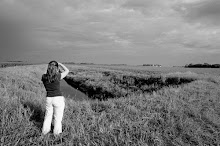The theme for this spring event was Ohanami which is the word for the Japanese cherry blossom festival. The only limitations were the budget and the desire of the event planners, for us not to use pink. The challenge would be to create a design that looked sophisticated for the audience, captured a sense of spring and expressed the meaning of Ohanami without sub-text.

Ohanami save the date card
After doing research and investigating some illustrations, I decided on a simple, beautiful and sophisticated approach. I used a light blue to white gradient and overlapping, somewhat silhouetted cherry blossoms that would express an evening event and also the name of the fundraiser. The brown highlights were used to bring in the eye but not distract from the softness of the overall piece. The falling petals were used to draw the eye across the piece from top to bottom and from left to right.

Ohanami Poster
We were asked to design a save the date card, letterhead, invitation, RSVP card, poster and program. A light, serif face was used in conjunction with a condensed, sans-serif that complemented the piece's airy, open style.

Ohanami letterhead
The printing was done at very low cost, so the design and typography needed to hold up to less expensive paper and inks. We also chose to place in the Japanese characters to add a small, but important link to the heritage of the words themselves. They also helped to draw the eye into the center of the piece, where the main content was held.

Ohanami program cover
The pieces were very well received and the project was a really great exercise in several design and production challenges. The design was translated successfully over several pieces, conveyed the mood and theme and also reproduced very well in a very small budget.


















